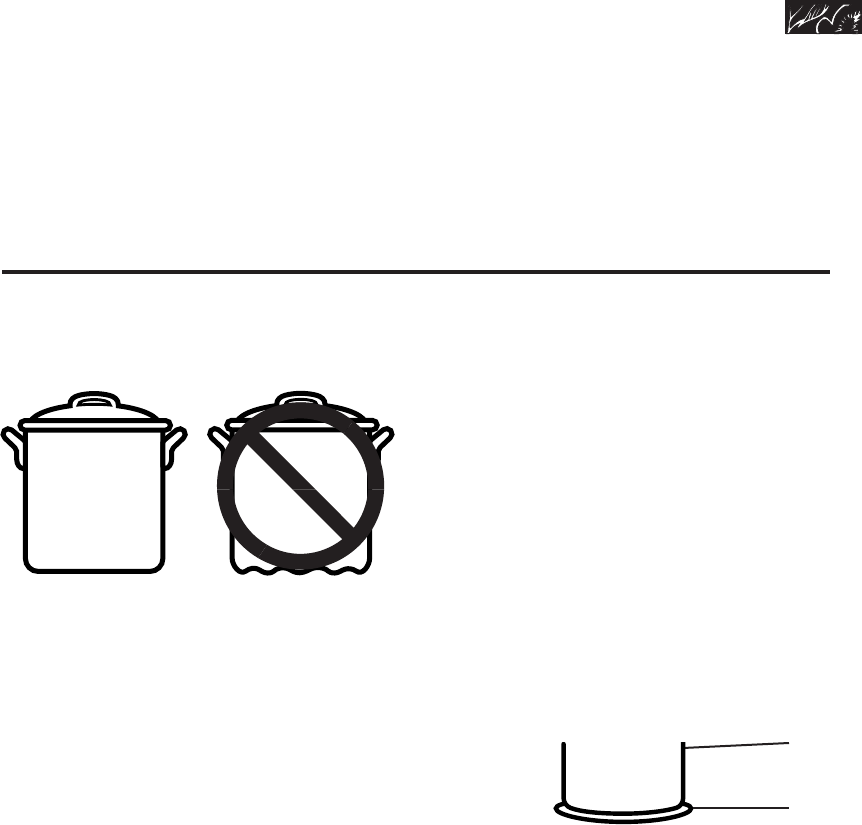
11
U sing and Caring for Your Cooktop
• Do not use the cooktop as a cutting
board.
• Do not allow anything that could melt,
such as plastic or aluminum foil, to come
in contact with the cooktop while it is hot.
• Dropping a heavy or hard object on the
cooktop could crack it. Be careful when
using heavy skillets and large pots. Do
not store jars or cans above the cooktop.
• Sugary spills and soils can cause pitting.
See pages 12 and 13 for more information.
Cookware tips
• Select a pan that is about the same size
as the surface unit.
• NOTE: For best results and greater
energy efficiency, use only flat-bottomed
cookware that makes good contact with
the surface units. Cookware with rounded,
warped, ribbed (such as some porcelain
enamelware), or dented bottoms could
cause uneven heating and poor cooking
results.
You can, however, use the newer
cookware available with slightly indented
bottoms or very small expansion channels.
This cookware is specially designed to
provide the good contact needed for best
cooking results.
Also, woks, canners, and teakettles
with flat bottoms suitable for use on your
cooktop are now available in most stores
that sell housewares.
• The pan should have straight sides and
a tight-fitting lid.
• Choose medium to heavy gauge (thick-
ness) pans that are fairly lightweight.
• The pan material (metal or glass) affects
how fast heat transfers from the surface
unit through the pan material and how
evenly heat spreads over the pan bottom.
Choose pans that provide the best cooking
results.
• Handles should be made of sturdy, heat-
resistant material and be securely attached
to the pan.
• With your hand, feel the bottom of your
pans while they are cool for nicks and
scratches. Nicks and scratches on pan
bottoms will scratch the ceramic glass
cooktop.
• Avoid spillovers on cooktop. Use pans
with tall sides.
NOTE: Do not leave empty cookware, or
cookware which has boiled dry, on a hot
surface unit. The cookware could overheat
and damage the cookware or surface unit.
Home canning information
• Use the largest surface unit for best
results. Also, use a canner/pan which
can be centered over the surface unit.
• Start with hot water. This reduces the
time the control is set on high. Reduce
heat setting to lowest position needed
to keep water boiling.
• Refer to your canner manual for specific
instructions.
Center over
surface unit
Pan
Surface
unit


















